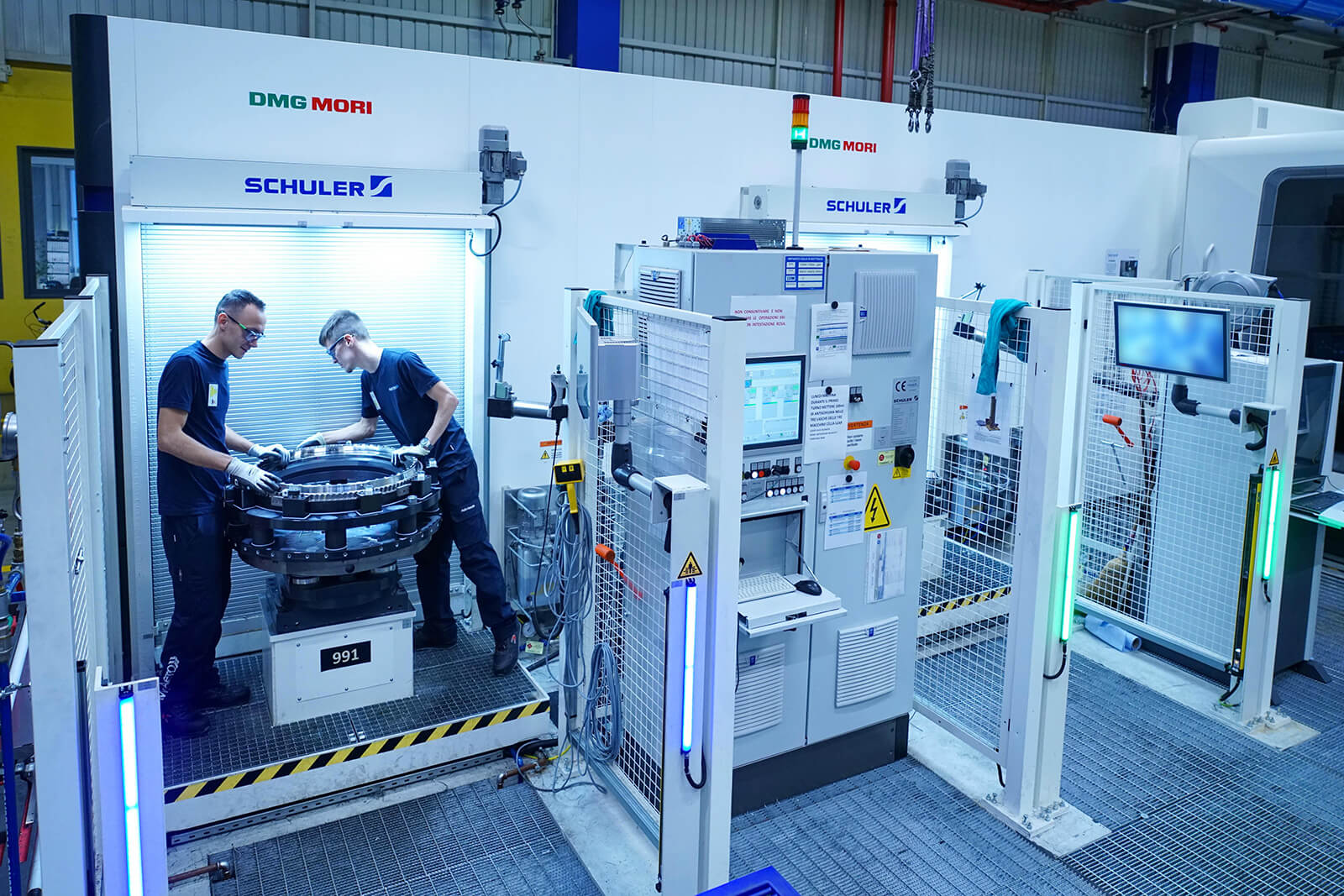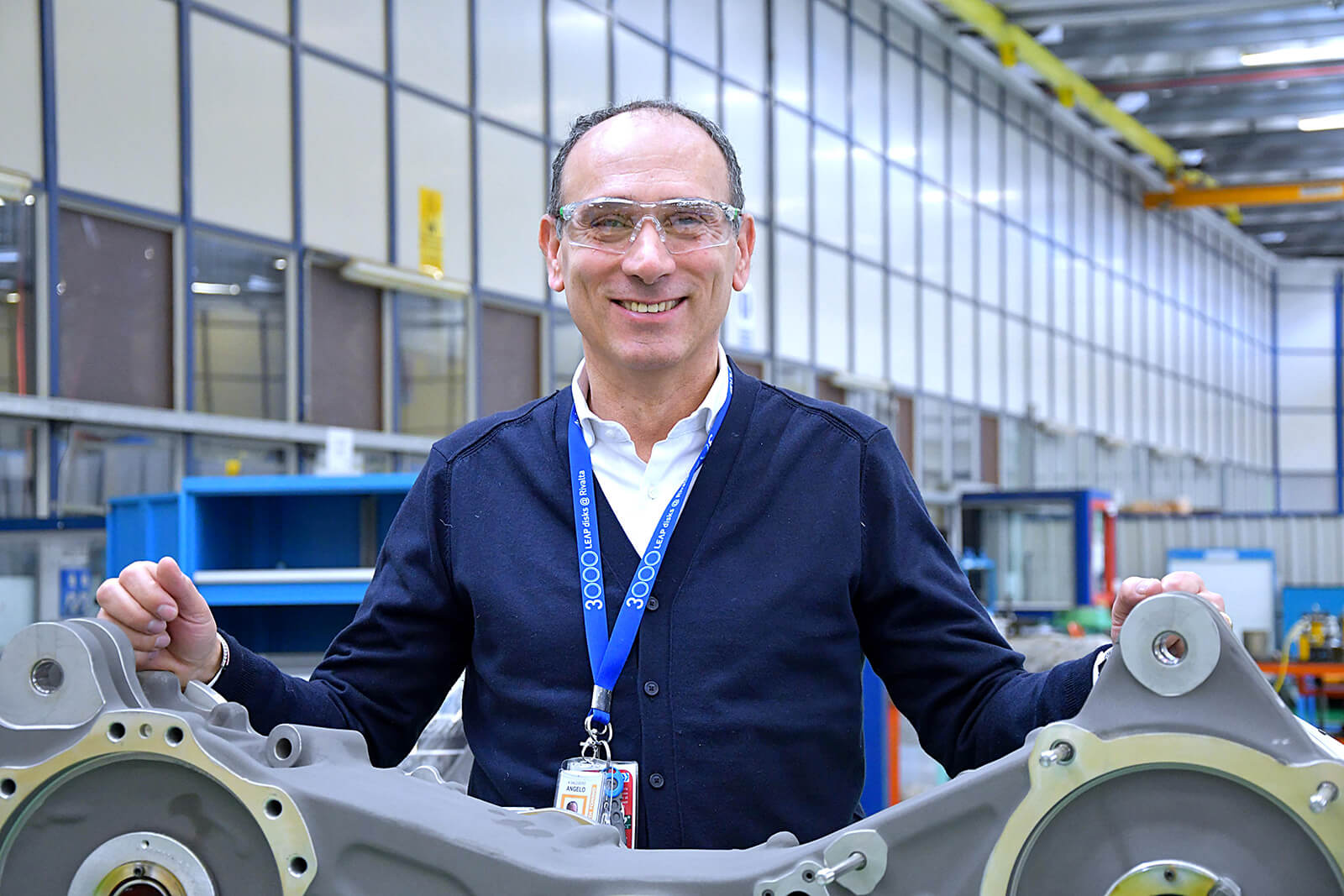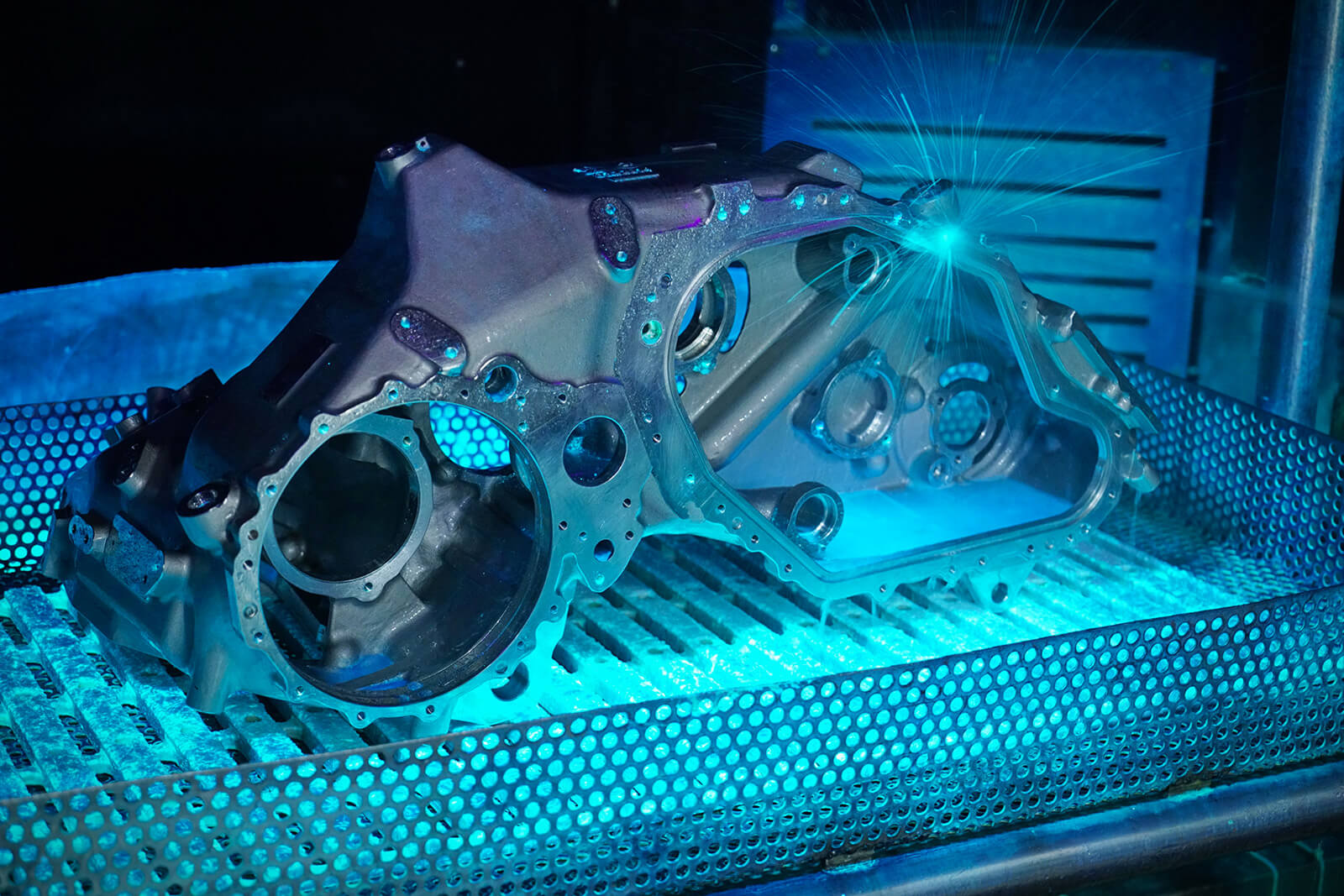Humans
Technology that flies
In recent years, Avio Aero has developed an efficient production process dedicated to the production of transmission systems to equip aircraft engines.
Jun 2020
In today’s globalized and interconnected world, the transport industry has over the years contributed greatly to the economic development of many nations. The civil aviation sector has taken on an increasingly central role thanks to the shortening of distances, allowing an increasingly intense exchange of people and goods that would have been unthinkable even just 30 years ago. Although the COVID-19 emergency is putting the industry to the test, over the years the entire international aeronautics industry has made major technological and process developments, producing aircraft that are increasingly efficient, capacious and with a particular focus on fuel consumption, both in terms of environmental impact and payload cost containment. An efficiency that, necessarily, had to see the development of new engines that would be able to best perform this delicate task.
It is precisely in this context that Avio Aero, in order to produce components with a high level of quality and safety, faces new challenges every day in developing technology at the service of the aeronautics industry. Founded in 1908 and today part of the GE Aviation Group, Avio Aero boasts a team of over 5,000 people, of whom 4,600 are based in Italy and distributed between the headquarters in Rivalta di Torino (TO) and the other production facilities in Brindisi, Pomigliano d'Arco (NA) and Cameri (NO). The company works day in day out on the design and manufacture of mechanical transmissions, turbines, combustors and, more generally, systems for civil and military aeronautics.
Thanks to continuous investment in research and a consolidated network of relationships with leading international universities, Avio Aero has developed globally recognized technological and manufacturing excellence. "The key factor distinguishing our production process is the complexity of the parts we produce. We therefore need appropriate technology and, above all, know-how that starts from our engineering, during project design, and runs right up to factory processes. It is also worth saying that the requirements of the aeronautical world are extremely stringent. In addition to technology, we have therefore had to adopt appropriate procedures to manage this production flow in order to always ensure compliance with legislative and design regulations”, says Angelo Sallustio, Global Supply Chain & Plant Leader of the Rivalta di Torino plant. This production site is divided into two macro-areas, the first and largest of which is dedicated to the construction of gearboxes, the main task of which is to take the motion from the turbine shaft of the engine and use it to provide the energy necessary for the operation of a series of engine and aircraft accessories: from the fuel pump to the electric generators, essential for the operation of the aircraft and its services. The second area of the plant is dedicated to the construction of turbine components, such as discs, static and rotary seals, shrouds and bearing supports".
The production process, which for the first area can take as long as several weeks, starts from the project specifications sent by the customer, on the basis of which design development for the engine concerned and process industrialization take place. At the end of development, the Central Program located in Rivalta di Torino analyzes the customer's volume requests, which are then transferred to the internal production program managed by the SAP company tool. At this point, both the request for purchasing materials from suppliers and the internal production line plan are launched, the latter synchronized according to the availability of materials and the lead time of the supply.
"The key factor distinguishing our production process is the complexity of the parts we produce: we need appropriate technology and know-how that starts from our engineering and runs right up to factory"
"At this stage, given the fact that we have about 4000 codes to manage, there is a certain complexity in our process. If we consider the gears that are the core element of our gearboxes, we start with the turning and toothing phases and then move on to heat treatments. The latter are often preceded by copper plating, which is intended to provide the necessary resistance and at the same time a high surface hardness of the areas subject to contact, to avoid excessive wear under extreme operating conditions (high rolling friction and high temperatures). Once these steps have been completed, the semi-finished products return to the final machining area where the finishing turns are completed and all narrow tolerance surface grinding, including toothing, is performed. Non-destructive testing and subsequent precision finishing then give the final configuration to the gearbox which, in synchrony with the other gearbox components, will guarantee the necessary functionality in terms of strength, precision and noise level".
Everything under control. At this point in the production cycle, it is fundamental to conduct final tests with all the serialized components, which are completely traceable. This allows the entire production process of each single item to be examined in detail. "Since we are certified by ESA (the European Space Agency, ed.) and ENAC (the Italian Civil Aviation Authority, ed.), some parts are supplied with a so-called Form-1, i.e. an airworthiness certificate that allows assembly on a final component. In other cases, where we have an intermediate customer downstream of our supply, we still ensure traceability, but leave the aeronautical certification required for flight to the customer”, Sallustio explained. "From a quality control point of view, we conduct incoming inspections, depending on the type of product code and requirements, which are followed by checks directly on the line, during all stages of production. We then proceed to the final quality control check".
Avio Aero has concentrated part of its resources in recent years on exactly these in-process controls, in order to be able to intercept any production issues before the part reaches the end of the production cycle, which would inevitably have an impact on the increasingly demanding delivery times. In fact, forecasts for the next 20 years, drawn up by one of the world's leading giants in aeronautics, see an increase in demand for aircraft construction of about 44,000 aircraft, which is a minimum of 88,000 engines. This is a clear indication of a rapidly expanding market, with lead times becoming tight and with a need to reduce production costs being an increasing priority. It is true that today around 4% of global pollution is caused by aircraft and the development of environmentally-sustainable engines is becoming increasingly central in the aerospace sector. It is precisely for this reason that the company is increasingly working with aluminum and magnesium alloys in order to reduce overall aircraft weight and therefore fuel consumption. "Again, with a view to optimizing production phases, automation is becoming an increasingly important matter for us. We have started to use robotics in phases where volumes are starting to be larger, for example, on LEAP discs (about 1800 per year), but we are thinking of implementing automation in the painting areas too as part of a discourse related to both repeatability and the environment/health”, underlined the Plant Leader. "Measuring machines are also equipped with automated dimensional detection systems, as well as washing systems, on which we use shuttles for material handling. I would say that where there is a certain systematic nature in production, we have installed automated systems".
In order to increase productivity, in compliance with high quality and safety standards, Avio Aero has also introduced lean manufacturing concepts in recent years, allowing production costs to be reduced by up to 25%. "We have analyzed the entire operating cycle to make the work more ergonomic for operators and therefore more precise and less tiring, making the quality level of the finished product even higher. Moreover, by removing tiring and damaging movements for operators, the downtime of operations has inevitably decreased, to the benefit of productivity”, added Sallustio. "The interesting thing about this process was the direct involvement of operators, with whom we developed all the workstations, adopting the best methods that can be used in each specific production phase. Operators who, like all our employees, are constantly trained through specific training sessions that always focus on the individual’s skills and abilities, which are fundamental for our growth and development".
"Operators, like all our employees, are constantly trained through specific training sessions that focus on the individual’s skills and abilities, which are fundamental for our growth and development"
To complete this interesting journey through Avio Aero's production departments, it is worth highlighting the importance of the use of concepts typical of industry 4.0 in the day-to-day operations of the Turin-based company. Technology must help technicians and management to evaluate in real time the performance of a machining center, rather than a measuring device or a heat treatment cycle, in order to react quickly in correcting any unwanted drifts or changing working parameters to the benefit of product quality.
"Through the typical 4.0 tools, we analyze all the process parameters and then prepare corrective actions right down to the level of the machine operator, who has a huge part to play”, concluded the Plant Leader. "These concepts will soon be brought to company management with the introduction, for example, of a smartphone app dedicated to the real-time monitoring of energy consumption in each department. For a company like ours, this represents a very high expense item through which to obtain feedback with the aim of reducing overall plant costs".








